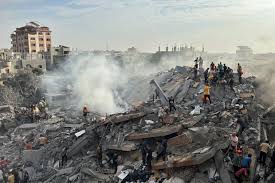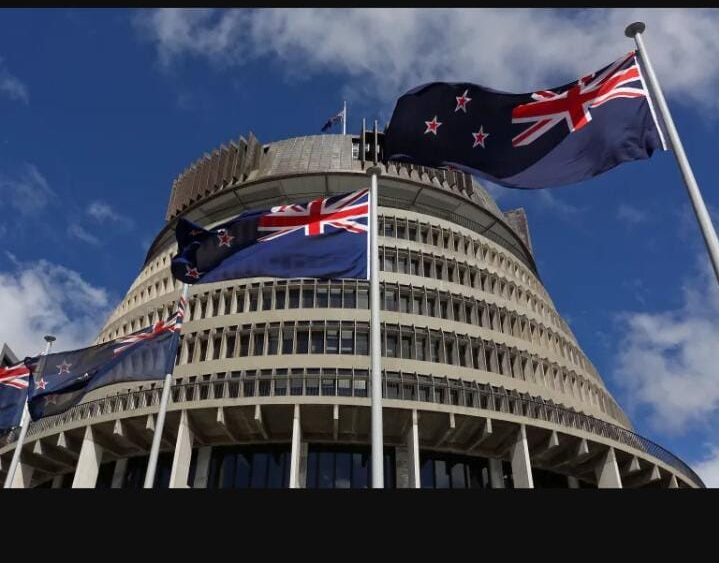
The conflict between Israel and Gaza is one of the longest-standing and most complex geopolitical issues in the modern world. It is deeply rooted in history, politics, and the regional dynamics of the Middle East. This article provides a comprehensive overview of when Israel first started military operations against Gaza, highlighting key events and the factors leading to the conflict’s escalation.
Historical Context: The Formation of Israel and the Palestinian Struggle
The roots of the Israel-Gaza conflict can be traced back to the broader Arab-Israeli conflict, which began after the establishment of the State of Israel in 1948. The creation of Israel led to a series of wars and displacements, particularly affecting Palestinians, many of whom were displaced and became refugees in Gaza and other areas. Tensions between Israelis and Palestinians intensified over time, as competing nationalist movements sought control over the land.
The 1967 Six-Day War and Israeli Occupation
The pivotal event that laid the groundwork for the modern conflict between Israel and Gaza was the Six-Day War in 1967. During this war, Israel captured several territories, including the Gaza Strip, from Egypt. This marked the beginning of Israel’s military presence and administration in Gaza, with significant implications for the future of the region. The occupation was met with resistance from Palestinian factions, leading to ongoing tensions.
First Intifada (1987-1993): The Uprising Against Israeli Occupation
The First Intifada, which began in 1987, was a mass Palestinian uprising against Israeli occupation in Gaza and the West Bank. It was characterized by widespread protests, civil disobedience, and violent clashes between Palestinians and Israeli forces. Gaza became a focal point of the uprising, with significant civilian casualties and increased militarization. The conflict during this period was a precursor to more extensive confrontations in the years to come.
The Oslo Accords and Partial Autonomy (1993-2000)
The signing of the Oslo Accords in 1993 between Israel and the Palestine Liberation Organization (PLO) brought hopes for peace. Under the agreement, Gaza was granted limited self-governance under the newly formed Palestinian Authority (PA). However, the accords failed to resolve key issues such as borders, refugees, and the status of Jerusalem. Gaza remained a flashpoint for violence, and peace efforts stalled in the following years.The Rise of Hamas and the Second Intifada (2000-2005)In 2000, the Second Intifada erupted after failed peace negotiations, leading to a new wave of violence. During this period, Hamas, an Islamist militant group, gained popularity in Gaza by opposing both the Israeli occupation and the Palestinian Authority. Hamas became a dominant force in Gaza, engaging in armed confrontations with Israeli forces. The Second Intifada saw an escalation of suicide bombings, airstrikes, and ground operations in Gaza, marking the beginning of more direct military engagements.Israel’s 2005 Disengagement from GazaIn 2005, Israel unilaterally disengaged from Gaza, withdrawing all settlers and military forces. This move was intended to reduce friction and allow Palestinians greater control over Gaza. However, the withdrawal did not lead to lasting peace. In 2006, Hamas won parliamentary elections and later seized full control of Gaza in 2007, further straining relations with Israel.
The Start of Full-Scale War: Operation Cast Lead (2008-2009)
The first major military operation by Israel against Gaza following the 2005 disengagement was Operation Cast Lead in December 2008. The operation was launched in response to rocket fire from Gaza into Israeli territory. It involved intense aerial bombardments and a ground invasion, resulting in widespread destruction and significant civilian casualties in Gaza. This marked the beginning of a series of wars between Israel and Hamas.
Subsequent Conflicts: Pillar of Defense and Protective Edge
After Operation Cast Lead, several other military operations were launched by Israel in response to continued rocket attacks from Gaza. Notable among these were Operation Pillar of Defense in 2012 and Operation Protective Edge in 2014. These conflicts followed a similar pattern: escalation of hostilities, Israeli airstrikes, and ground invasions, followed by ceasefires brokered through international mediation.
The Humanitarian Crisis in Gaza
The repeated wars between Israel and Gaza have led to a severe humanitarian crisis in the enclave. Gaza has been under a blockade by Israel since 2007, restricting the movement of goods and people. The blockade, combined with recurring military operations, has devastated Gaza’s economy, infrastructure, and public services, leading to widespread poverty and suffering for its inhabitants.
Recent Conflicts: Operation Guardian of the Walls (2021)
In May 2021, another major conflict erupted between Israel and Hamas, known as Operation Guardian of the Walls. The immediate trigger was tensions in East Jerusalem, but the conflict quickly spread to Gaza,
Subscribe to Follow Global Trends for daily global news.
Find Out How To Make Money As A Full Time Writer/Blogger Guide.
To Advertise, Advertise Your Affiliate Links on FollowGlobalTrends.com for Just $1 Per Link Per Month!
Related Articles
Israel’s War on Gaza Live: Israeli
Israel’s War on Gaza: Live Updates on Israelis in Cairo as US Says Truce in Sight
Israel’s War on Gaza Live: Truce Still Elusive as Israeli Attacks Kill 52
Brief: Israel War on Gaza Live: No Letup in Israeli Attacks Ahead of Truce Talks
Barclays Backtracks on Israeli Bond Withdrawal
Israel War On Gaza News Update
Written by: Enyoghasi Ngozi pricillia

